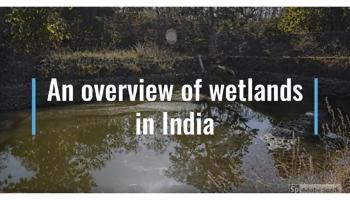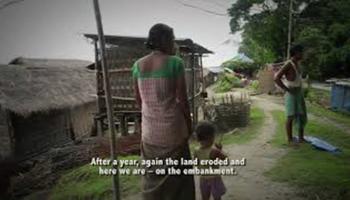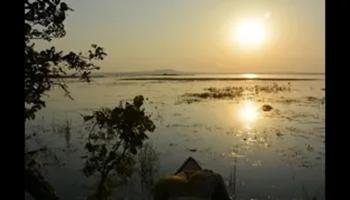Lakes, Ponds and Wetlands
Water, water, everywhere
Posted on 09 Sep, 2016 05:42 PMThe city of Udaipur is all about its lakes. If Pichola gets the maximum tourist footfall, the scenic beauty of Fateh Sagar invites solitude lovers. The Udai Sagar lake in the east, which remained the first line of defence for the city, now meets the industrial need for water.

Training Workshop on Understanding and Resolving Water Conflicts in India
Posted on 05 Sep, 2016 04:36 PM

Water warriors at work
Posted on 24 Aug, 2016 09:31 AMThe pitiful state of some of the water bodies in the country, coupled with the sheer apathy of the government, have forced some well-meaning citizens to come out of their comfort zones and make a difference. Some of these efforts, like the Puttenahalli lake in Bengaluru that is now overflowing with clean water, have been successful, while others are ongoing.

Encroachment behind Chennai floods: Panel
Posted on 21 Aug, 2016 08:36 PMEncroachment of lakes and riverbeds caused Chennai floods: Panel

Forts of fortune: How the Marathas saved water
Posted on 20 Aug, 2016 02:27 PMIn the olden times, people knew the importance of water and had devised a number of techniques to manage and conserve water resources. These efforts not only met the drinking water needs of the people, but also helped the survival of livestock and agriculture in areas where perennial rivers were absent and the population depended on rains and often faced water scarcity or droughts.

Art of Living guilty of damaging Yamuna floodplains
Posted on 16 Aug, 2016 09:57 AMWorld Culture Festival damaged Yamuna floodplains, concludes NGT

Community effort saves mangroves
Posted on 04 Aug, 2016 09:52 AMCome monsoon, the villages in the Sundarbans islands witness nature’s fury with floodwaters overriding all boundaries and inundating huge tracts of land. As such, the earthen embankments, stretching to 3600 kms on the 54 inhabited islands out of a total of 102 in the Sundarbans, protect scores of people from floods and tidal waves.

Run-up to the photo biennale
Posted on 02 Aug, 2016 06:12 PMWhen - August, 4, 2016 between 6PM and 8PM
Where - Goethe-Institut / Max Mueller Bhavan Chennai; No. 4, Rutland Gate, 5th Street, Chennai, Tamil Nadu 600 006
About PondyPHOTO

Rejuvenating traditional water system in Maharashtra
Posted on 02 Aug, 2016 09:44 AMMalguzari tanks were ponds made for water harvesting by the Malguzaars, who were zamindars or tenants in eastern Vidarbha, Maharashtra two centuries ago.These tanks provided water for irrigation and also increased the availability of fish for local consumption.

Where the holy rivers meet
Posted on 01 Aug, 2016 07:53 PMTemples in India have always had a water body near its premises. Whether it is a natural pond, a free-flowing river or a man-made tank, the water inside them seem to imbibe the sacredness associated with the temples, thereby becoming an integral part of the cultural, social and religious landscape of that area.









